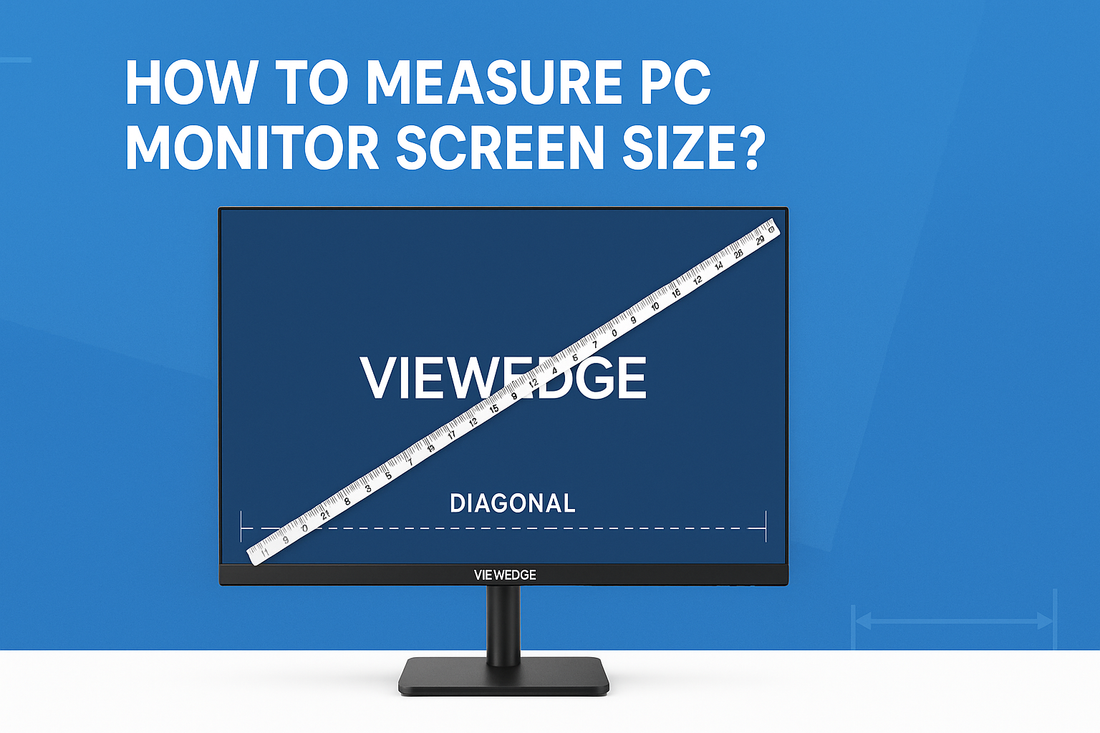
How to Measure PC Monitor Screen Size?
Share
When buying a new monitor, organizing your workspace, or purchasing a monitor stand, it is necessary to know the size of your screen precisely. Most people believe that screen size is the width or height of the monitor, but that's not the way monitor sizes are actually measured.
This tutorial will show you exactly how to accurately measure PC monitor screen size, why you should do this, and how to avoid common pitfalls.
What Does "Monitor Size" Actually Represent?
PC monitor size quantifies the diagonal measurement of the active screen area, not the width, height, or the bezel (frame) around the screen.
When you read on a screen that it is "24-inch" or "27-inch," that number refers to the diagonal measurement from one corner of the visible screen to the opposite corner. The bezels (the black plastic frame surrounding the screen) are not included in the measurement.
Additionally, different aspect ratios—like the common 16:9 or ultra-wide 21:9—can make monitors with the same diagonal size appear wider or taller. That’s why it’s important to know both the diagonal size and the physical dimensions when planning your setup.
How to Measure Your PC Monitor: Step-by-Step
Tools You’ll Need:
-
A measuring tape or ruler
-
A level surface to place the monitor (if it’s not already on your desk)
Step 1: Take the Active Screen Area Measurement
-
Turn off your monitor so your eyes can quickly identify the edge of the display area.
-
Place the measuring tape at the upper-left corner of the display area (not the bezel) and extend it to the lower-right corner.
-
Be sure the tape is straight across the screen’s diagonal.
✅ This is your monitor size.
Step 2: Verify the Measurement
-
Double-check that you didn’t measure over the bezel.
-
Make sure the tape is perfectly diagonal, not tilted to the side.
Step 3: Optional — Convert Units
-
If you measured in centimeters, convert to inches by dividing the number by 2.54.
-
Example: 61 cm ÷ 2.54 ≈ 24 inches.
Why Proper Monitor Measurement Matters
Knowing your monitor size is useful for:
-
✅ Buying a new monitor
-
✅ Setting up a multi-monitor workspace
-
✅ Choosing compatible monitor stands or mounts
-
✅ Selecting a desk that fits your monitor comfortably
Mistakes to Avoid
Common errors when measuring a monitor:
-
❌ Measuring with the bezel: Only measure the active screen area.
-
❌ Measuring width or height: Only the diagonal matters.
-
❌ Using an angled measuring tape: Always pull the tape straight from corner to corner.
Incorrect measurements can lead to buying incompatible accessories or selecting a desk that’s too small.
Monitor Sizes (Quick Reference)
| Monitor Size | Approx. Width | Approx. Height |
|---|---|---|
| 21 inches | 18.3 inches | 10.3 inches |
| 24 inches | 20.9 inches | 11.8 inches |
| 27 inches | 23.5 inches | 13.2 inches |
Note: Ultra-wide monitors (21:9 aspect ratio) will have significantly wider physical dimensions for the same diagonal size.
Conclusion
Measuring your PC monitor screen size is simple but must be done correctly. Always measure the active diagonal screen area from corner to corner and never include the bezel.
Proper measuring helps you:
-
✅ Purchase compatible monitor accessories
-
✅ Plan a multi-monitor setup
-
✅ Select the right desk size
Careful measuring can help you avoid mismatched purchases and unnecessary returns.
Why Won’t My PC Connect to My Monitor?
More Thought:
Is a 100Hz Monitor Good for Trading?
